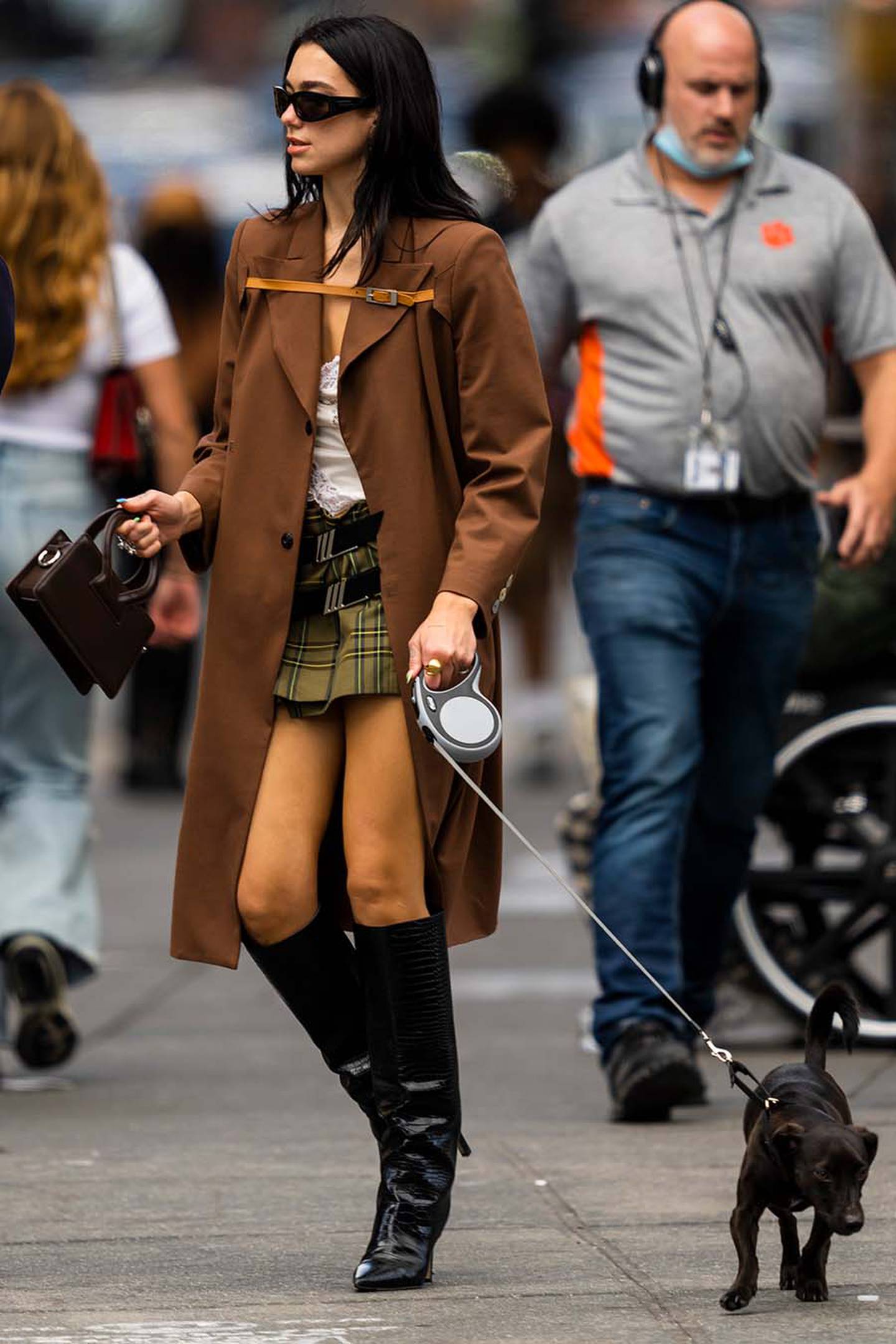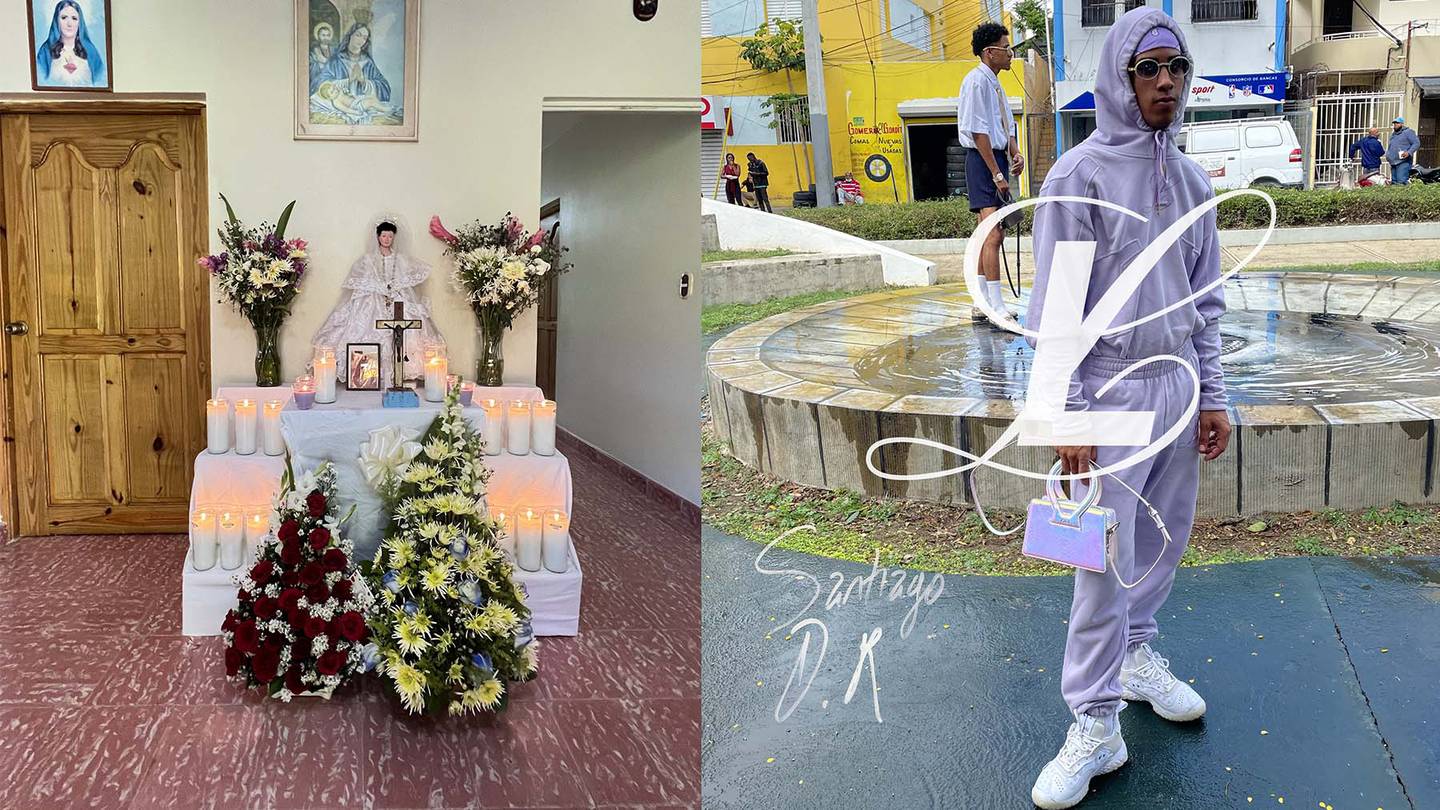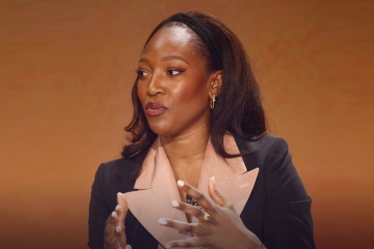
BROOKLYN — Last month, designer Raul Lopez wore a sparkly Supreme hoodie cinched with a wide 90s-era belt as he directed queer Mexican singer San Cha as she rehearsed for art foundation Performance Space’s spring gala. After a series of adjustments on a pitch-black stage, the chanteuse stepped into the spotlight and sang a song in Spanish with thunderous vibrato, wowing onlookers.
The moment could easily have been a metaphor for Lopez’s own emergence from dark times. For 11 years, the Dominican-American co-founder of Hood by Air, who left the label in 2010 and started his own brand, Luar, struggled to keep the business afloat. Although his post-gender designs, reflecting a mix of Brooklyn, Dominican and high fashion sensibilities, were worn by the likes of Rihanna, they never took off commercially. Twice, in 2014 and 2019, he was forced to put the label on pause. The second time, he suffered from mental burnout.
Now Luar is in the spotlight. High-wattage pop stars like Dua Lipa, J Balvin and Shawn Mendes are wearing his clothes. And stores like Nordstrom and Ssense are clamouring to stock his popular Ana bag, a high-margin hero product, made in China and priced under $300, which has been compared to Telfar’s hit tote. “If Telfar’s shopper is the Bushwick Birkin, Luar’s handbag is the Crown Heights Kelly,” wrote Highsnobiety, a hub for young fashion fans, last year.
Since Luar returned to the New York fashion week schedule last September, the label has grown its wholesale partners from zero to eight, adding influential retailers like Dover Street Market, H. Lorenzo and Moda Operandi. According to Lopez, it’s on track to double revenue this year. The Ana bag generates about 40 percent of total sales.
“This is my third act,” mused Lopez. “I was so concerned about getting off the hamster wheel and being forgotten, out of sight, out of mind. And then I was like, ‘Fuck it, I’m going to do shit on my own time.’”
Lopez, 34, grew up in Los Sures, a predominantly Dominican neighbourhood in the South Williamsburg section of Brooklyn, before a tide of gentrification ushered in million-dollar studio apartments and Michelin-starred restaurants. Back then, it was a tough area. He witnessed trans neighbours displaced from their homes. And with his Catholic upbringing, he found it hard to be himself. He remembers blowing out candles on his birthday cakes and wishing he wasn’t gay.
But Lopez, whose mother was a seamstress and whose father worked in construction, was drawn to fashion as a means to express himself. In junior high school, he started a business ironing neighbours’ clothes. This earned him $700 a week, allowing him to wear Giorgio Armani to class. In high school, he began making his own clothes by cutting up the legs of Marithe Francois Girbaud jeans and sewing them onto white Hanes t-shirts. Eventually, some of his peers started buying his custom-made pieces.
He also joined the city’s voguing community, a multicultural, mostly LGBTQ group that gathered on Christopher Street in the West Village. At the age of 16, he met Shayne Oliver, and the two became fast friends, admiring each other’s looks.
At the time, Lopez had Naomi Campbell-like hair and often wore knitted Coogi dresses, silver-tinted Dior sunglasses and a Louis Vuitton speedy bag. Oliver sported a blonde mohawk with leopard leggings and fringed gogo boots. In 2006, the two co-founded Hood by Air, a label that was early to luxury streetwear with its mix of “hood” aesthetics and high fashion.
Lopez left the label in 2010, before HBA’s rapid ascent, briefly moving to the Dominican Republic to reconnect with his roots. There, inspired by the way local men dressed, he started making clothes in tailor shops and posting them on Facebook.
In 2011, Lopez started his own label, then called Luar Zepol (his name spelt backwards), infused with his Latin roots. He showed his first New York Fashion Week collection two years later in a park in Chinatown. But although Luar attracted stockists like downtown fashion temple Opening Ceremony, the label struggled to take off. Two years later, he shut it down.
“I wasn’t generating enough cash,” Lopez said. “I was just doing shows to do shows.”
In 2017, he tried to mount a comeback. The following year, he was nominated for the CFDA Vogue Fashion Fund and more stores picked up his label. But he knew the business lacked solid infrastructure.
“I was like, I need to do this right. I need to have my business on point,” said Lopez, who lost 30 pounds from the relentless pace of “designing, producing and showing” with little support.
At first, he didn’t realise he was suffering from mental illness. “I’m usually the one who goes like ‘Girl snap out of it’ to everyone,” said Lopez. But after his 2019 show, he took refuge at Palm Heights, a resort in the Grand Cayman Islands where he was — and still is — a creative consultant, and sought the help of a doctor.
The seeds of Luar’s “third act” were planted before Lopez’s burnout, back in 2018. After Pyer Moss founder Kerby Jean-Raymond won the CFDA Vogue Fashion Fund that year, beating out Lopez, Jean-Raymond came up to him and said: “I got you. Give me a minute,” Lopez recalled.
In the summer of 2021, Jean-Raymond made good on his promise. Your Friends In New York (YFINY), an incubator he had started the year before with French luxury group Kering to support minority-owned fashion labels, gave Lopez the funding he needed to stage a second comeback, as well as critical business support in areas like collection planning and cash flow management.
Lopez, now refers to YFINY as Luar’s “business arm,” though the incubator has no financial stake in the label. With its support, Luar was reorganised for commercial viability. On top of runway pieces, the brand added lower-priced items like the Ana bag and a line of easy pieces like cotton t-shirts and sweatpants called Luar Basico, moving production from local factories to lower-cost facilities in Portugal and China.

Lopez “never thought that much about costing and margins” but now closely works with a product developer who ensures they make a profit on each piece sold. The business has also grown a direct-to-consumer channel that accounts for 65 percent of revenue.
“Creators of colour have been stuck, working so hard just to get above the fray,” said Kethlyn White, the director of YFINY. “There’s so much there to offer if they could just get a little bit of help. We built a safe space; we built strong tools; we were able to identify and solve common problems.”
Now, Lopez is becoming a symbol of what’s possible for designers of colour.
“I think for us, the newer girls on the scene, his presence lets us feel a little bit more secure, makes us feel like, okay, we’re doing the right thing, and that there is a space for us and what we think is cool,” said designer Brandon Blackwood.
“He’s one of the last few genuinely authentic New York brands.”


